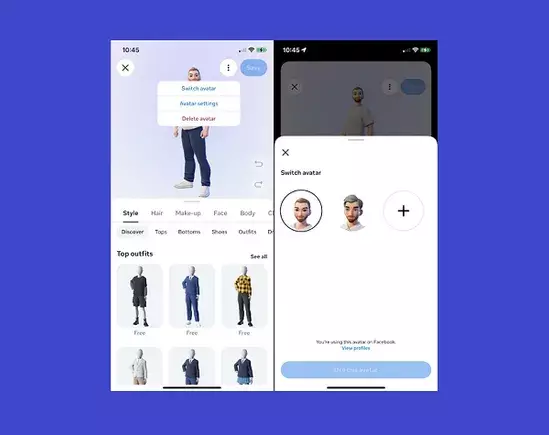Meta’s introduction of the ability to create and manage multiple avatars marks a significant shift in how we present ourselves online. While some may dismiss avatars as mere caricatures or superficial identifiers, their evolving sophistication suggests a deeper potential for personalized digital identities. Unlike static profile pictures, avatars offer a dynamic, customizable form of self-representation that extends across Meta’s sprawling universe—Facebook, Messenger, Instagram, and beyond. This feature invites users to explore different facets of their personalities or styles, fostering a more nuanced online presence.
The concept of having multiple avatars isn’t merely about vanity; it’s a reflection of how modern social interactions are becoming more fluid and multifaceted. For individuals who enjoy experimenting with their appearance or want to craft distinct “digital personas” for various contexts, Meta’s platform provides an accessible and powerful toolset. Whether it’s a professional avatar for work-related interactions or a playful, exaggerated character for casual chats, the ability to switch between avatars can enrich user engagement and deepen personal expression.
Furthermore, Meta’s strategic focus appears to be oriented toward a future where avatars are central to immersive experiences. With augmented reality (AR) and virtual reality (VR) becoming more mainstream, these digital representations will serve as the bridge between our physical selves and expanded digital worlds. As the company refines its avatar creation tools—adding more body types, poses, facial controls, and accessories—it’s evident that Meta envisions avatars as versatile, living entities within its metaverse.
Customization as a Gateway to Personal Identity
Meta’s ongoing enhancements—such as parametric face controls, generative AI-driven clothing design, and detailed facial features—highlight the platform’s commitment to providing users with an unprecedented level of customization. This is not simply about aesthetics; it’s about enabling individuals to craft avatars that resonate with their unique identities, cultural backgrounds, or aspirational selves.
The introduction of features like diverse body types, hairstyles, facial hair, makeup, and accessories embodies a shift toward inclusivity and representation. In a digital environment that often mirrors societal biases, Meta’s efforts to expand avatar options symbolize a step toward recognizing the rich diversity of its global user base. For marginalized groups, this offers a vital avenue to see themselves reflected more authentically in digital spaces.
The new tools—such as AI-generated textures and custom clothing uploads—afford an almost infinite permutation of styles. Users can experiment with combinations, finding the perfect expression of who they are or who they wish to be. Yet, it’s worth noting that, despite these advances, adoption remains somewhat niche, suggesting that while the technology has matured, the social impulse to wield it creatively is still developing. Nevertheless, the trend points toward a future where multi-avatar management could become a fundamental part of digital life, much like managing multiple social profiles.
The Future of Avatars: Beyond Simple Images
Meta’s involvement in the metaverse infrastructure indicates that avatars won’t remain confined to simple profile icons. They will evolve into complex, interactive figures capable of participating in VR environments, AR overlays, and live social interactions. The company’s investments in avatar-specific tools and features are no longer just experiments—they are strategic investments in a new form of digital interaction.
By enabling users to maintain multiple avatars, Meta is fostering a culture where people can experiment freely, shaping their digital selves to suit different contexts. This multiplicity may also promote more authentic online behaviors, as individuals can tailor their representations according to mood, intent, or audience. In essence, these avatars could serve as digital masks—tools for creative expression, social navigation, and even emotional release.
Yet, this proliferation of avatar options raises important questions about authenticity and identity. As avatar customization becomes more immersive and personalized, the lines between our true selves and digital facades may blur further. While some might argue that this risks detaching us from reality, others will see it as a liberating expansion of personal agency in digital spaces.
Meta’s development of multi-avatar capabilities signals a profound shift in how we conceive of self-representation online. It transforms avatars from static icons into versatile, customizable personas that can adapt to myriad digital scenarios. Whether these features will revolutionize social interaction or simply serve as playful upgrades remains to be seen, but it’s clear that the digital landscape is moving toward richer, more expressive virtual identities.


Leave a Reply